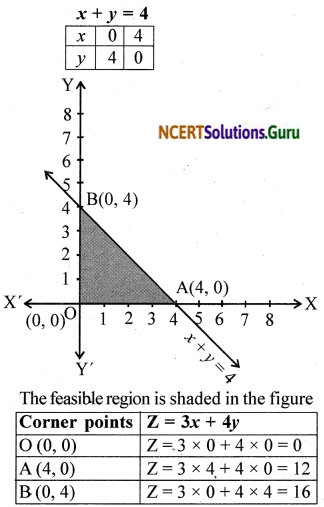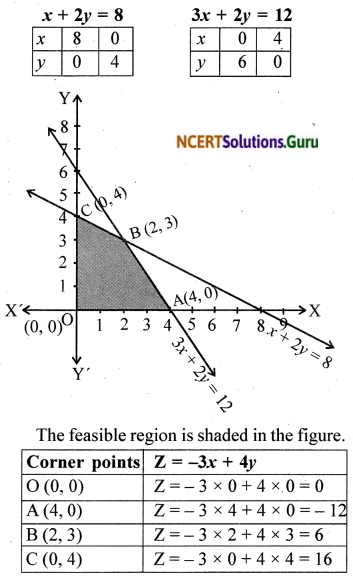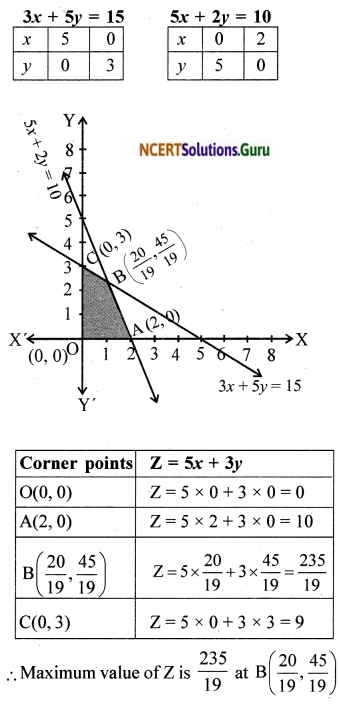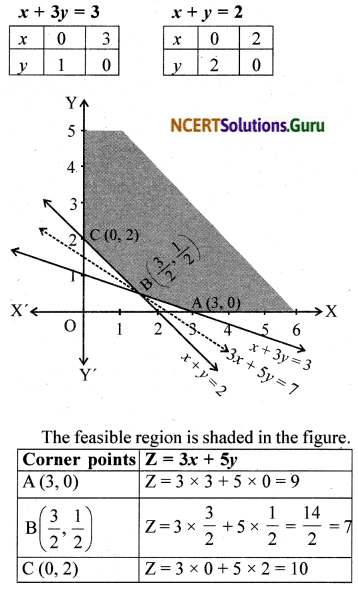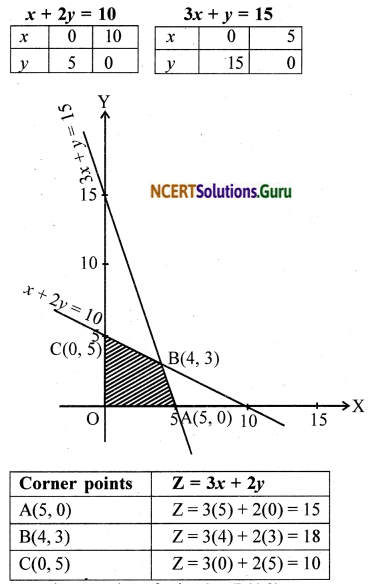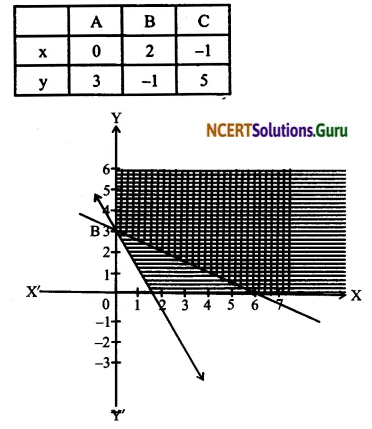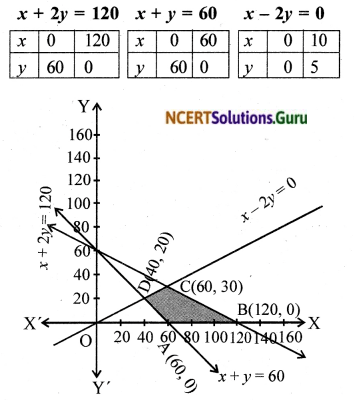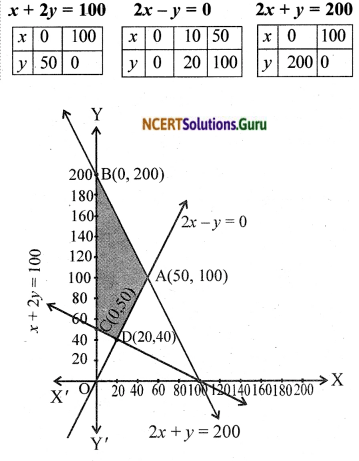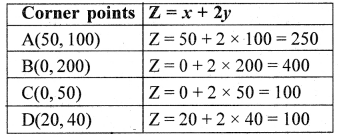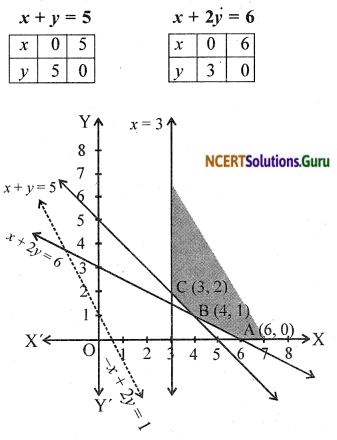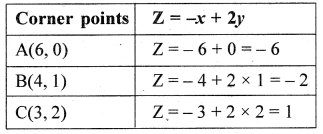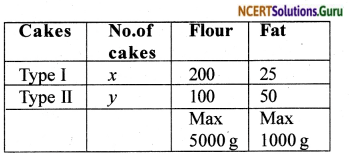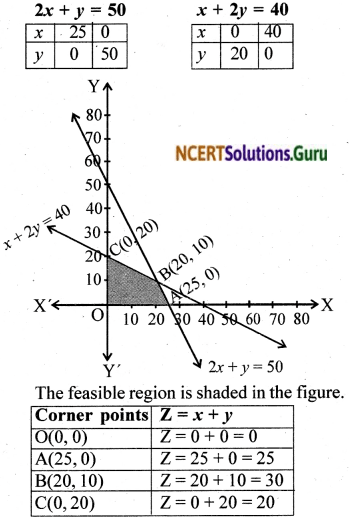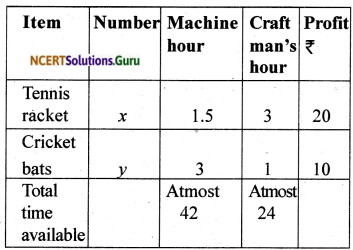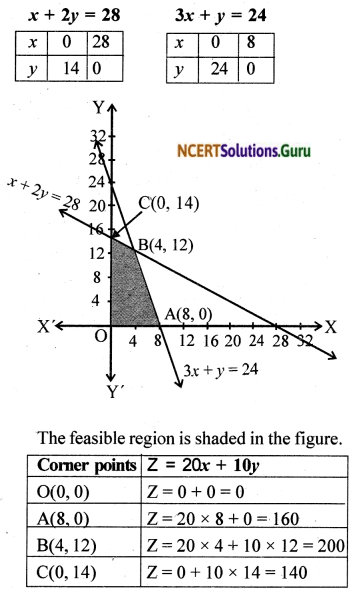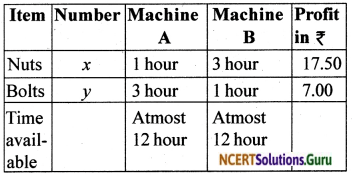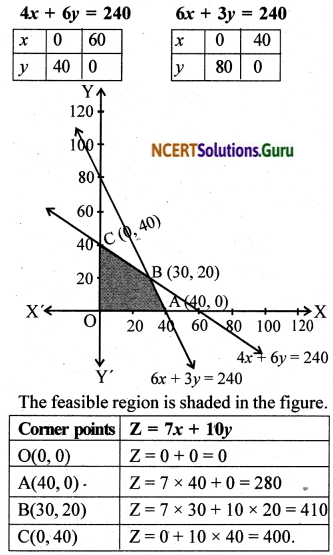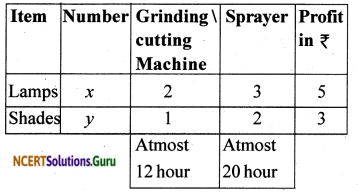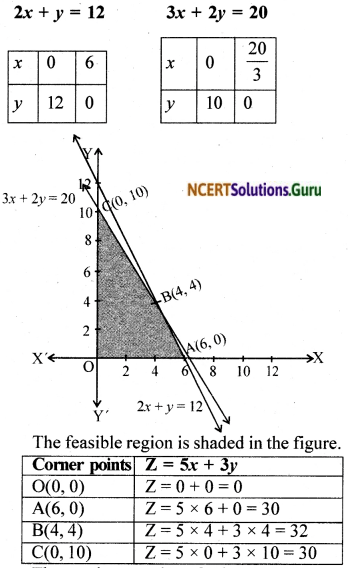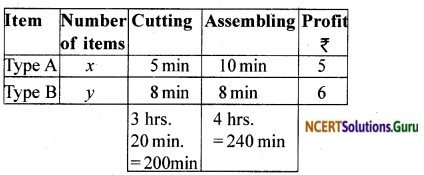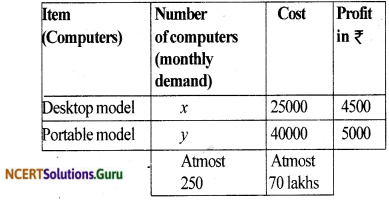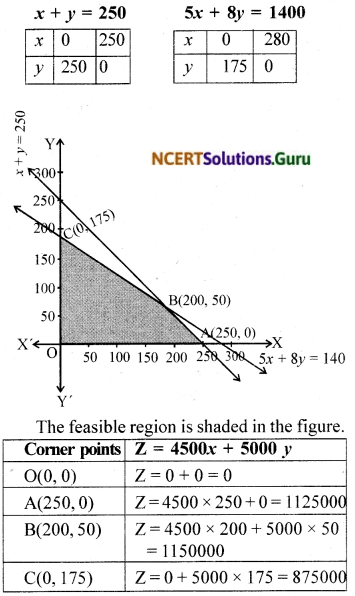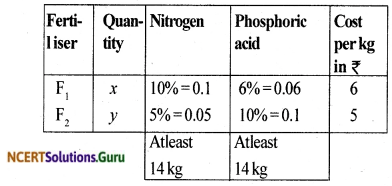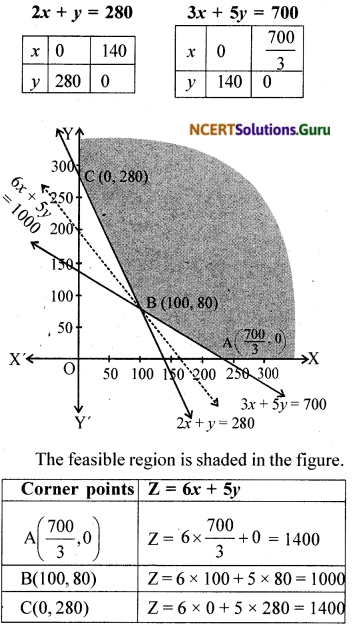NCERT Solutions for Class 12 Maths Chapter 11 Three Dimensional Geometry Ex 11.2
These NCERT Solutions for Class 12 Maths Chapter 11 Three Dimensional Geometry Ex 11.2 Questions and Answers are prepared by our highly skilled subject experts. https://mcq-questions.com/ncert-solutions-for-class-12-maths-chapter-11-ex-11-2/
NCERT Solutions for Class 12 Maths Chapter 11 Three Dimensional Geometry Exercise 11.2
![]()
Ex 11.2 Class 12 NCERT Solutions Question 1.
Show that the three lines with direction cosines:
\(\frac { 12 }{ 13 } ,\frac { -3 }{ 13 } ,\frac { -4 }{ 13 } ,\frac { 4 }{ 13 } ,\frac { 12 }{ 13 } ,\frac { 3 }{ 13 } ,\frac { 3 }{ 13 } ,\frac { -4 }{ 13 } ,\frac { 12 }{ 13 } \) are mutually perpendicular.
Solution:
Consider the lines with direction cosines
\(\frac{12}{13}, \frac{-3}{13}, \frac{-4}{13} \text { and } \frac{4}{13}, \frac{12}{13}, \frac{3}{13}\)
The lines with direction cosines l1, m1, n1 and l2, m2, n2 are perpendicular if
l1l2 + m1m2 + n1n2 = 0
l1l2 + m1m2 + n1n2
= \(\left(\frac{12}{13} \times \frac{4}{13}\right)+\left(\frac{-3}{13} \times \frac{12}{13}\right)+\left(\frac{-4}{13} \times \frac{3}{13}\right)\)
= \(\frac{48}{169}-\frac{36}{169}-\frac{12}{169}=0\)
∴ The lines are perpendicular.
Consider the lines with direction cosines

are mutually perpendicular.
Class 12 Math Ex 11.2 NCERT Solutions Question 2.
Show that the line through the points (1, – 1, 2), (3, 4, – 2) is perpendicular to the line through the points (0, 3, 2) and (3, 5, 6).
Solution:
Let A (1, – 1, 2), B(3, 4, – 2), C (0, 3, 2) and D(3, 5, 6) be the points
Direction ratios of AB = 3 – 1, 4 – 1, – 2 – 2 = 2, 5, – 4
Direction ratios of CD = 3 – 0, 5 – 3, 6 – 2 = 3, 2, 4
a1a2 + b1b2 + c1c2 = 2(3) + 5(2) + (- 4) (4) = 6 + 10 – 16 = 0
Hence AB ⊥ CD.
![]()
Ex 11.2 12 Class NCERT Solutions Question 3.
Show that the line through the points (4, 7, 8) (2, 3, 4) is parallel to the line through the points (- 1, – 2, 1) and (1, 2, 5).
Solution:
Let A(4, 7, 8), B (2, 3, 4), C (- 1, – 2, 1) and D(1, 2, 5) be the points
Direction ratios of AB = 2 – 4, 3 – 7, 4 – 8 = – 2, – 4, – 4
Direction ratios of CD = 1 – 1, 2 – 2, 5 – 1 = 2, 4, 4

Question 4.
Find the equation of the line which passes through the point (1, 2, 3) and is parallel to the vector \(3\hat { i } +2\hat { j } -2\hat { k }\)
Solution:
Let \(\vec{a}\) be the position vector of the point (1, 2, 3) and \(\vec{b}\) be the vector \(3 \hat{i}+2 \hat{j}-2 \hat{k}\)
∴ \(\vec{a}=\hat{i}+2 \hat{j}+3 \hat{k}\)
The vector equation of the line is \(\vec{r}\) = \(\vec{a}\) + λ\(\vec{b}\)
\(\vec{r}\) = (∴ \(\vec{a}=\hat{i}+2 \hat{j}+3 \hat{k}\)) + λ(\(3\hat { i } +2\hat { j } -2\hat { k }\))
Question 5.
Find the equation of the line in vector and in cartesian form that passes through the point with position vector \(2\hat { i } -\hat { j } +4\hat { k }\) and is in the direction \(\hat { i } +2\hat { j } -\hat { k }\).
Solution:
Let \(\vec{a}\) be the position vector of the point \(\vec{a}\) = \(\vec{a}=2 \hat{i}-\hat{j}+4 \hat{k}\)
\(\vec{b}=\hat{i}+2 \hat{j}-\hat{k}\)
The vector equation of a line passing through the point with position vector \(\vec{a}\) and parallel to \(\vec{b}\) is \(\vec{r}\) = \(\vec{a}+\lambda \vec{b}\)
Hence the equation of the line is
\(\vec{r}=(2 \hat{i}-\hat{j}+4 \hat{k})+\lambda(\hat{i}+2 \hat{j}-\hat{k})\)
The cartesian equation is
\(\frac{x-2}{1}=\frac{y+1}{2}=\frac{z-4}{-1}\)
Another Method:
The point is (2, – 1, 4)
The direction ratios of the line are 1, 2, – 1
The equation of the line passing through (x1, y1, z1) and having direction ratios a, b,c is
\(\frac{x-x_{1}}{a}=\frac{y-y_{1}}{b}=\frac{z-z_{1}}{c}\)
Hence cartesian equation is
\(\frac{x-x_{1}}{a}=\frac{y-y_{1}}{b}=\frac{z-z_{1}}{c}\)
The vector equation is
\(\vec{r}=(2 \hat{i}-\hat{j}+4 \hat{k})+\lambda(\hat{i}+2 \hat{j}-\hat{k})\)
![]()
Question 6.
Find the cartesian equation of the line which passes through the point (- 2, 4, -5) and parallel to the line given by \(\frac{x+3}{3}=\frac{y-4}{5}=\frac{z+8}{6}\)
Solution:
The cartesian equation of a line passing through the point (x1, y1, z1) and parallel to the line with direction ratios a, b, c is
\(\frac{x-x_{1}}{a}=\frac{y-y_{1}}{b}=\frac{z-z_{1}}{c}\)
Hence the cartesian equation of the required line is \(\frac{x+2}{3}=\frac{y-4}{5}=\frac{z+5}{6}\)
Question 7.
The cartesian equation of a line is \(\frac{x-5}{3}=\frac{y+4}{7}=\frac{z-6}{2}\) write its vector form.
Solution:
The equation of the line is \(\frac{x-5}{3}=\frac{y+4}{7}=\frac{z-6}{2}\)
The required line passes through the point (5, – 4, 6) and is parallel to the vector \(3 \hat{i}+7 \hat{j}+2 \hat{k}\). Let \(\vec{r}\) be the position vector of any point on the line, then the vector equation of the line is
\(\vec{r}=(5 \hat{i}-4 \hat{j}+6 \hat{k})+\lambda(3 \hat{i}+7 \hat{j}+2 \hat{k})\)
Question 8.
Find the vector and the cartesian equations of the lines that passes through the origin and (5, – 2, 3).
Solution:
Let \(\vec{a}\) and \(\vec{b}\) be the position vectors of the point A (0, 0,0) and B (5, – 2, 3)

Question 9.
Find the vector and cartesian equations of the line that passes through the points (3, – 2, – 5), (3, – 2, 6).
Solution:
Let \(\vec{a}\) and \(\vec{b}\) be the position vector of the point A (3, -2, -5) and B (3, -2, 6)
\(\vec{a}=3 \hat{i}-2 \hat{j}-5 \hat{k}\) and \(\vec{b}=3 \hat{i}-2 \hat{j}+6 \hat{k}\)
∴ \(\vec{b}-\vec{a}=0 \hat{i}+0 \hat{j}+11 \hat{k}\)
Let \(\vec{r}\) be the position vector of any point on the line. Then the vector equation of the line is \(\vec{r}\) = \(\vec{a}\) + λ(\(\vec{b}\) – \(\vec{a}\))
\(\vec{r}\) = \((3 \hat{i}-2 \hat{j}-5 \hat{k})+\lambda(11 \hat{k})\)
The cartesian equation is
\(\frac{x-3}{0}=\frac{y+2}{0}=\frac{z+5}{11}\)
![]()
Question 10.
Find the angle between the following pair of lines
(i) \(\overrightarrow { r } =2\hat { i } -5\hat { j } +\hat { k } +\lambda (3\hat { i } +2\hat { j } +6\hat { k } )\)
\(and\quad \overrightarrow { r } =7\hat { i } -6\hat { j } +\mu (\hat { i } +2\hat { j } +2\hat { k } )\)
(ii) \(\overrightarrow { r } =3\hat { i } +\hat { j } -2\hat { k } +\lambda (\hat { i } -\hat { j } -2\hat { k } )\)
\(\overrightarrow { r } =2\hat { i } -\hat { j } -56\hat { k } +\mu (3\hat { i } -5\hat { j } -4\hat { k } )\)
Solution:

Question 11.
Find the angle between the following pair of lines
(i) \(\frac{x-2}{2}=\frac{y-1}{5}=\frac{z+3}{-3}\) and \(\frac{x+2}{-1}=\frac{y-4}{8}=\frac{z-5}{4}\)
(ii) \(\frac{x}{2}=\frac{y}{2}=\frac{z}{1} \text { and } \frac{x-5}{4}=\frac{y-2}{1}=\frac{z-3}{8}\)
Solution:
i. The direction ratios of the first line are 2, 5, – 3 and the direction ratios of the second line are -1, 8,4
Let θ be the acute angle between the lines, then

ii. The direction ratios of the first line are 2, 2, 1 and the direction ratios of the second line are 4, 1, 8 Let θ be the acute angle between the lines.

Question 12.
Find the values of p so that the lines
\(\frac{1-x}{3}=\frac{7 y-14}{2 p}=\frac{z-3}{2}\) and \(\frac{7-7 x}{3 p}=\frac{y-5}{1}=\frac{6-z}{5}\) are at right angles
Solution:
The given lines are

Question 13.
Show that the lines \(\frac{x-5}{7}=\frac{y+2}{-5}=\frac{z}{1}\) and \(\frac{x}{1}=\frac{y}{2}=\frac{z}{3}\) are perpendicular to each other
Solution:
The direction ratios of the first line are 7, – 5, 1 and the direction ratios of second line are 1, 2, 3
a1a2 + b1b2 + c1c2 = (7)(1) + (-5)(2) + (1)(3) = 7 – 10 + 3 = 0
∴ The lines are perpendicular to each other.
![]()
Question 14.
Find the shortest distance between the lines
\(\overrightarrow { r } =(\hat { i } +2\hat { j } +\hat { k } )+\lambda (\hat { i } -\hat { j } +\hat { k } )\) and \(\overrightarrow { r } =(2\hat { i } -\hat { j } -\hat { k } )+\mu (2\hat { i } +\hat { j } +2\hat { k } )\)
Solution:
\(\overrightarrow { r } =(\hat { i } +2\hat { j } +\hat { k } )+\lambda (\hat { i } -\hat { j } +\hat { k } )\) … (1)
\(\overrightarrow { r } =(2\hat { i } -\hat { j } -\hat { k } )+\mu (2\hat { i } +\hat { j } +2\hat { k } )\) … (2)

Question 15.
Find the shortest distance between the lines \(\frac{x+1}{7}=\frac{y+1}{-6}=\frac{z+1}{1}\) and \(\frac{x-3}{1}=\frac{y-5}{-2}=\frac{z-7}{1}\)
Solution:
Shortest distance between the lines

Question 16.
Find the distance between die lines whose vector equations are:
\(\overrightarrow { r } =(\hat { i } +2\hat { j } +3\hat { k) } +\lambda (\hat { i } -3\hat { j } +2\hat { k } )\) and \(\overrightarrow { r } =(4\hat { i } +5\hat { j } +6\hat { k) } +\mu (2\hat { i } +3\hat { j } +\hat { k } )\)
Solution:

![]()
Question 17.
Find the shortest distance between the lines whose vector equations are
\(\overrightarrow { r } =(1-t)\hat { i } +(t-2)\hat { j } +(3-2t)\hat { k }\) and \(\overrightarrow { r } =(s+1)\hat { i } +(2s-1)\hat { j } -(2s+1)\hat { k }\)
Solution:
The given equation can be reduced as
\(\vec{r}=(\hat{i}-2 \hat{j}+3 \hat{k})+t(-\hat{i}+\hat{j}-2 \hat{k})\)
and \(\vec{r}=(\hat{i}-\hat{j}-\hat{k})+s(\hat{i}+2 \hat{j}-2 \hat{k})\)
Comparing with the standard equation, we get

NCERT Solutions for Class 12 Maths Chapter 11 Three Dimensional Geometry Ex 11.2 Read More »

























